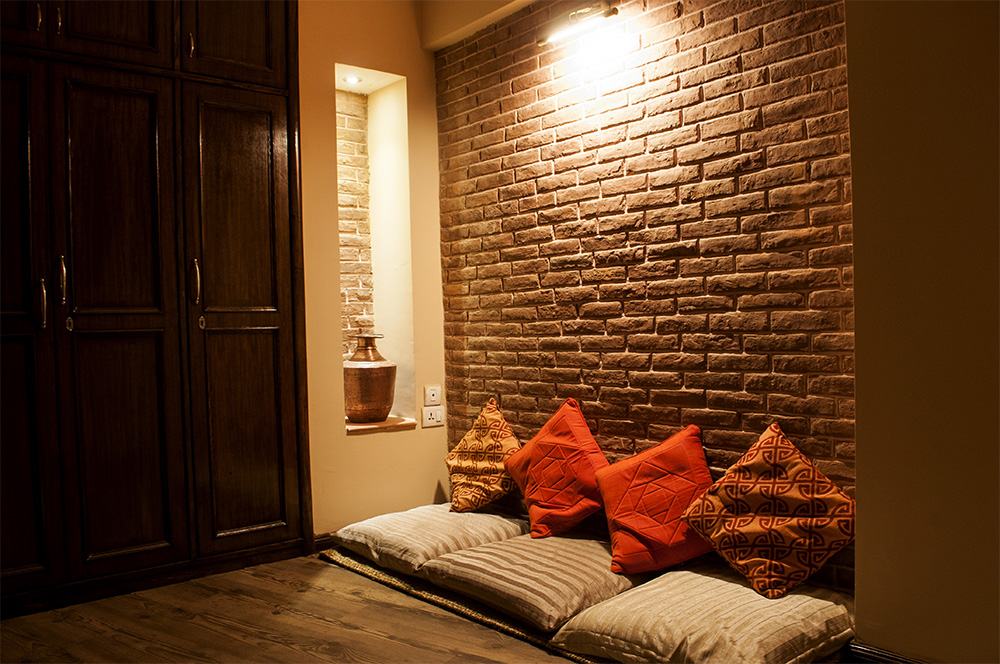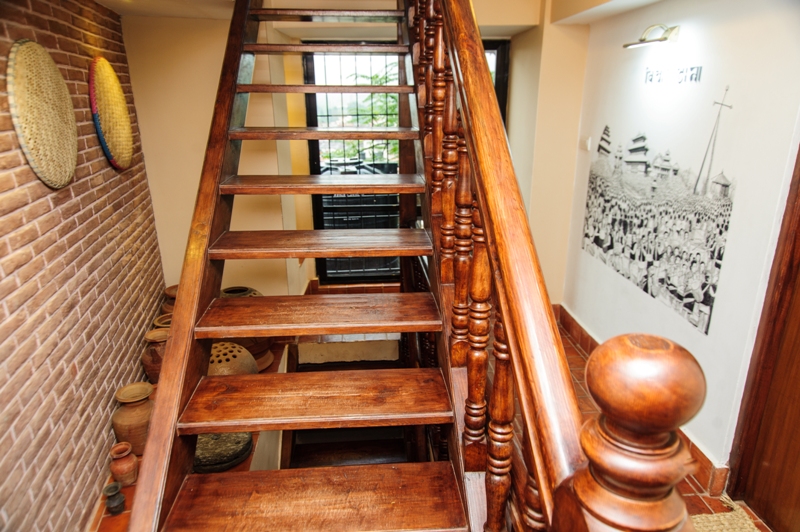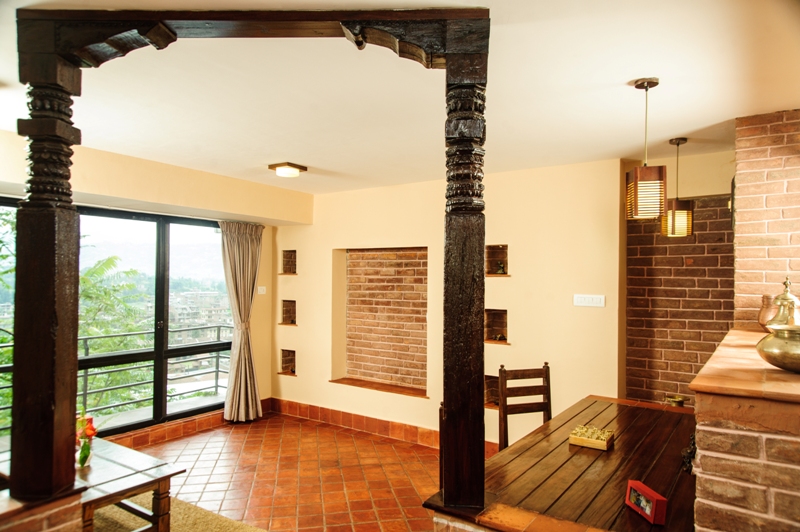Locally sourced and manufactured materials like ‘telia’ bricks, wooden carvings from Bhaktapur save a lot of embodied energy used in the manufacturing, shipping and packaging of products.
Further, the use of reclaimed bricks, wooden carved pillars and windows, has lowered the amount of resources needed to produce these materials.
Glass, metal, steel, aluminum, bricks, wood, etc being green materials, are easy to reuse and recycle over and over again without losing any quality. Usage of these materials along with reclaimed bricks, pillars and windows, recycled furniture, cushions, straw mats, local ‘telia’ bricks, ‘dachiapa’ bricks and ‘Jhingati’ tiles have not only made the house more energy and material efficient but also contributed to its authentic feel.
Rainwater harvesting is done by channeling roof water precipitation into an underground tank at site which is then filtered via bio-sand filtration technology before being used at the house.
The wastewater treatment plant has also been designed so that the waste water (grey water) can be recycled and reused as well. Thus, the only water that flows out of the house is the one that is flushed out from the cistern. Rest of the water is recycled inside the house for flushing purpose,reducing the amount of water consumption.
All in all, this is a small initiation from the Pradhanang family to preserve and showcase the Newar culture and architecture, while also being very sustainable and functional in the modern sense.
The hotel industry is notorious for hiring outsiders in almost every country in the world, but one factor that contributes to a hotel’s sustainability rating is their use of local labor. The more a hotel hires from the indigenous population, the more it contributes to the local economy and makes it more self sufficient. THAGU CHHEN is proud to employ local staff for serving the guests and thus letting our guests experience the essence of the Newar culture of this ancient city of Bhaktapur.










